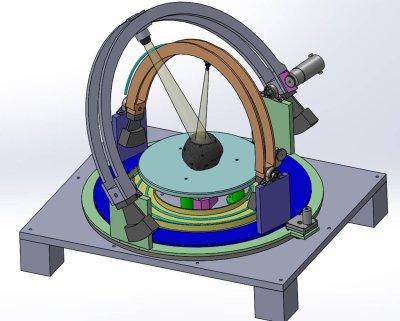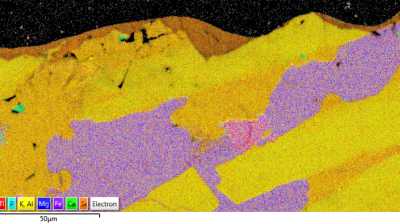WWU wins NASA contract to build new instrument to help Mars rover scientists
A group of faculty and staff from Western Washington University has teamed with Seattle-based aerospace manufacturing company First Mode to win a new $302,000 contract from NASA to design and build a new instrument called a goniometer that will help scientists and members of the Mars rover teams better understand what they are seeing and sampling on the Red Planet.
The WWU team is made up of Associate Professor of Geology Melissa Rice (also a member of the Mars Science Laboratory and Mars-2020 rover teams), Mike Kraft of Scientific Technical Services, and Assistant Professor of Geology Sean Mulcahy.
Rice said a chief deliverable to NASA from the contract is to produce the goniometer as well as the software to power and collate the data it collects from its spectrometer. Once the goniometer is complete, it will be housed in Western’s Mars Spectroscopy Lab and used by students to do research that will help scientists understand the data sent back from the rovers. The plans for building it and the software that runs it will then be made open-source so that other scientists can build the instrument themselves.
Spectrometers on Mars rovers take readings on rocks on the Martian surface from as far away as the horizon and as close as right next the rover’s wheels in an effort to gather data to better understand the composition of those rocks. The problem is, right now most spectroscopy lab measurements are made with the light source pointing straight down at the sample, and a small angle between the light source and the detector.
“Unfortunately, this is only accurate for simulating a situation on Mars where the sun is directly overhead and the sample is close to the rover,” Rice said. “But the rover can take all kind of images at different angles and distances with the sun at different heights in the sky; what we don’t know very well is how those angles, distances, and other factors impact the data being gathered.”
The new goniometer to be built by WWU and First Mode will allow for readings to be taken from any combination of angles.
One comparison might be a viewer who can only look at a 3-D topographical map of the Cascades from one direction and one elevation. The new goniometer, which in many ways is the world’s most advanced protractor, would allow the viewer to spin that same map and view it from any direction or elevation angle, from near the horizon to directly overhead.
Rice, Kraft, and Mulcahy will use the new instrument to build a database of how the spectrographic readings change based on the angles of the light source and detector, as well as important factors such as the rock’s texture and how its minerology has been altered due to weathering.
Rice said the group will use the new goniometer on samples of rocks from eastern Washington that are a good counterpart to the ones being studied on Mars. Using these rocks, the team will build the new database using research from Mulcahy on the rock’s mineral content and via imagery and testing from Kraft’s scanning electron microscope. Mars scientists can then use that data to be able much more accurately evaluate the readings from the spectrometers on the rovers.
“Why do we see what we see when we look at these rocks, and what about them makes their spectra change when we look at different angles? That’s what we want to find out,” Rice said.
A prototype concept of the goniometer was built and used by WWU graduate student Kathleen Hoza and undergraduate Lena Gibbs via a seed grant from the university’s Advanced Materials Science and Engineering Center (AMSEC); this prototype was used to illustrate the concept to NASA, and the new goniometer could help change the way scientists see Mars.
For more information on WWU’s contract with NASA, contact the Western Washington University Office of Communications at news@wwu.edu or (360) 650-3350.

